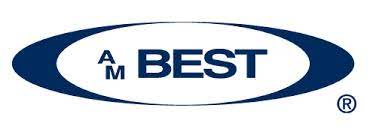The global dedicated reinsurance capital is estimated to have increased by just under 3% to US $532 billion so far in 2021 while insurance-linked securities (ILS), third-party or alternative reinsurance capital has recorded faster growth.
The latest data on the reinsurance and insurance market trends was provided rating agency, AM Best, and reinsurance broker, Guy Carpenter, who jointly have been tracking global reinsurance market capital and capacity availability, across traditional and alternative, or ILS market sources, for nine years.
According to AM Best and Guy Carpenter’s latest estimates, dedicated capital in the global reinsurance segment was approximately USD 520 billion as of year-end 2020, with the total splitting 80/20 between traditional and third-party capital, the latter almost unchanged in the last two years.
AM Best and its partner estimated that the global dedicated reinsurance capital had expanded further, to reach approximately US $532 billion by this stage in 2021, helped by expansion of both traditional and ILS capital sides of the market.
AM Best further notedthat the expansion of third-party capital, from dedicated ILS fund managers, reinsurers managing ILS fund strategies and other investment vehicles, plus direct ILS investor capital, had been slowing through recent years, but now a rebound is evident.
The rating firm clarified: “Heightened claims activity in 2017 and 2018 highlights the different responses of traditional and third-party capital as would be expected, in line with their time horizons.
“Traditional capital acknowledged the need to reinforce their balance sheet positions to withstand their risks for the medium to long term, while third-party capital became more cautious as to the level of their participation in the market, stabilizing around the $90 billion mark the last four years”, it added.
Noting further that sluggish pricing, trapped capital, loss creep affected the ability of the ILS market to continue its fast rate of expansion after the peak catastrophe loss years of 2017 and 2018, AM Best stated that having dealt with many of the issues faced and emerged relatively unscathed by the COVID-19 pandemic, the ILS market had returned to growth and further expansions is likely.
It stated: “Despite ongoing claims uncertainty, additional clarity of contract language, temporary rollover of capital, and a shift in focus toward higher-risk layers and retrocession are translating into renewed interest in the ILS market.”
Catastrophe bonds have seen an especially large resurgence of investor interest, given their more transparent and often predictable nature when it comes to losses threatening them.
AM Best noted that catastrophe bonds “dominance among ILS instruments continues to grow thanks to their liquidity” but also explained that renewed interest is now being seen in collateralized reinsurance.
AM Best and Guy Carpenter estimated that since the end of 2020, traditional reinsurance capital had grown by just under 2.8%, but that ILS capital grew by at least 3.4%.
It listed the drivers of growth as including the increasingly vital nature of ILS capacity to the global retrocession needs of reinsurers; the fact reinsurers continue to expand their ILS platforms, seeing it as partner capital rather than a competitor; and the fact that for major pensions, ILS remains an immaterial share of their overall portfolio allocations.
AM Best further clarified: “The diversification benefits – although questionable in an increasingly correlated world – remain attractive as long as participation is relatively modest and the returns justify it.”






